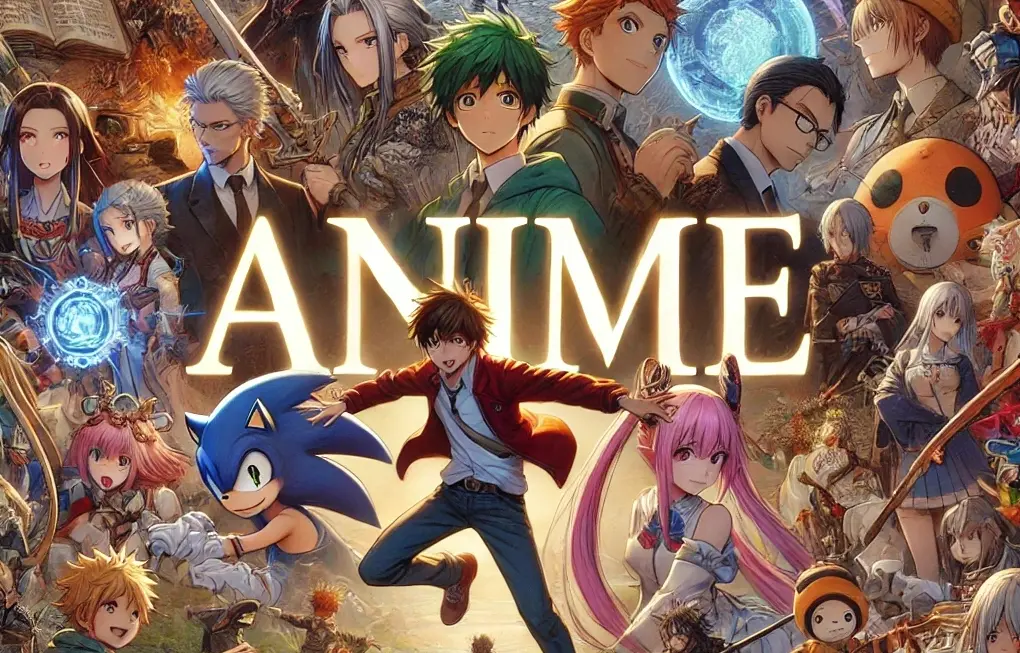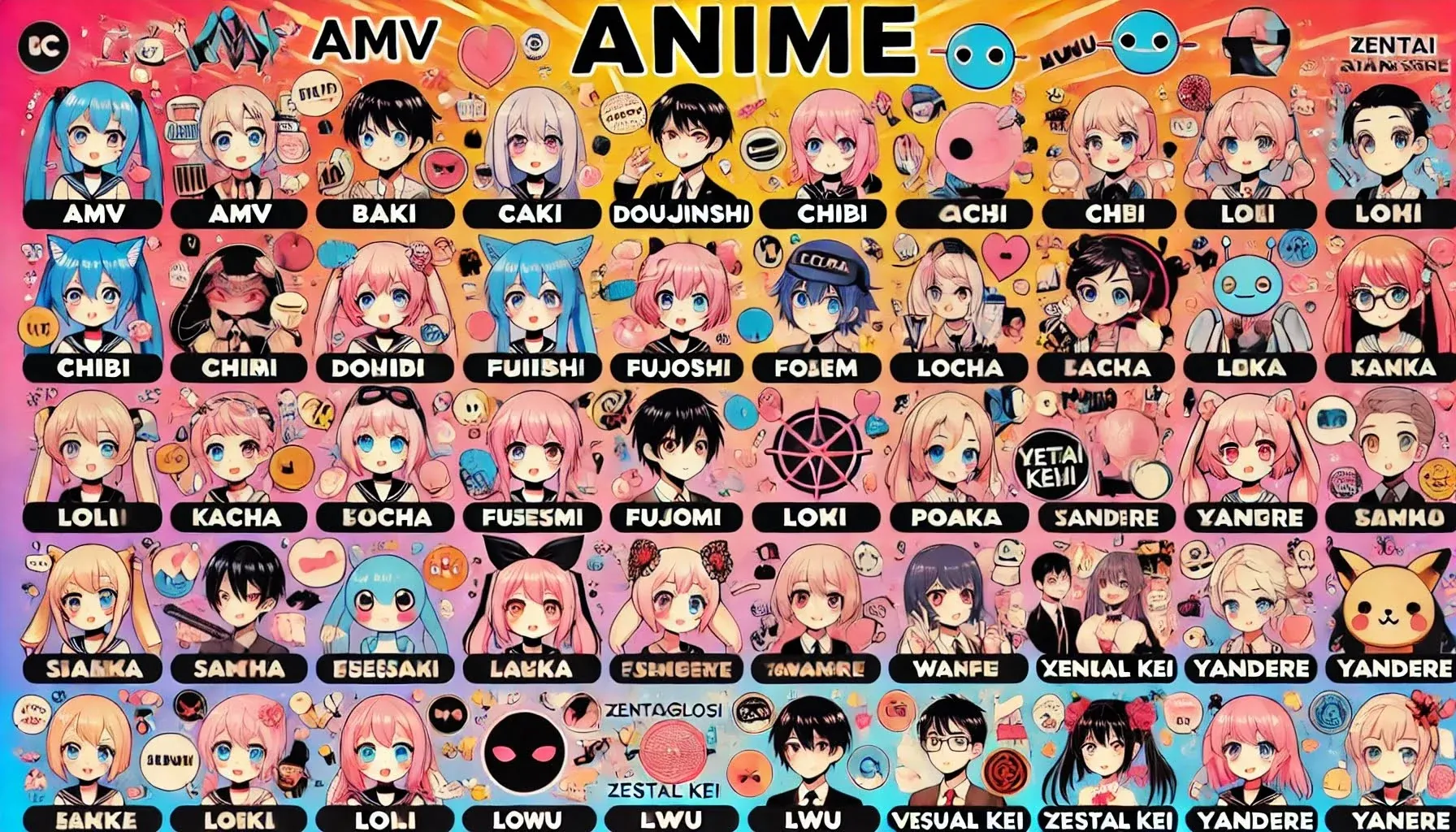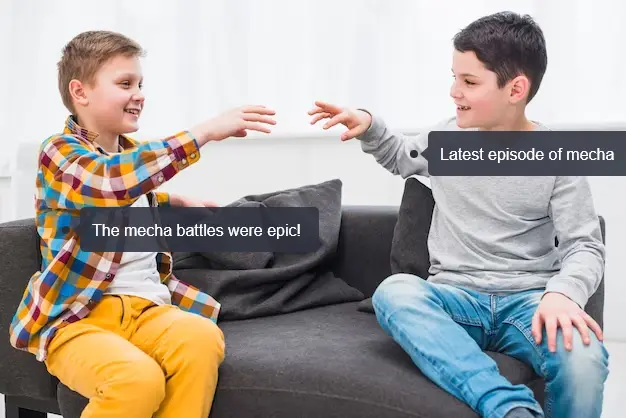What does anime mean? Extension, Use Cases & More

Last updated:7월 26, 2024
Table of content
Part 1. What does anime mean
Anime refers to a style of animation that originated in Japan and has become a global phenomenon. It encompasses a wide range of genres and themes, from action and adventure to romance and horror. Known for its colorful artwork, fantastical themes, and vibrant characters.
Unlike Western cartoons, anime often targets a broader audience, including children, teenagers, and adults. The term "anime" itself is derived from the English word "animation," but in Japan, it describes all forms of animated media.
Part 2. Difference between anime and manga
While the terms "anime" and "manga" are often used interchangeably, they refer to different forms of media. Anime, as mentioned, is animated and typically aired on television or released as movies or web series. Manga, on the other hand, is the Japanese word for comics or graphic novels.
Manga series often serve as the source material for anime adaptations. The key difference lies in their format: manga is a printed medium, whereas anime is a visual and auditory experience. Despite these differences, both share similar art styles and storytelling techniques.
Part 3. Popular anime slang terms from A to Z
Anime has its unique slang that fans use to communicate and express their passion. Here are some popular anime-related slang terms from A to Z:
A - Anime: Japanese animated series or films.
B - Baka: A Japanese word for "fool" or "idiot," often used in a playful manner.
C - Chibi: A style of drawing characters in a small, cute, and exaggerated way.
D - Dere: A suffix used to describe character types, such as "tsundere" (cold on the outside, warm on the inside).
E - Ecchi: Refers to mildly sexual content or fan service in anime.
F - Fanservice: Scenes designed to please the audience, often featuring suggestive content.
G - Gacha: Refers to a game mechanic often seen in mobile games where players spend currency for random items or characters.
H - Harem: A genre where one character is surrounded by multiple love interests.
I - Isekai: A genre where characters are transported to another world.
J - Josei: A genre targeted towards adult women, often featuring realistic romance.
K - Kawaii: Means "cute" in Japanese, a term often used to describe adorable characters or moments.
L - Light Novel: A style of Japanese novel primarily targeting young adults, often adapted into anime.
M - Mecha: A genre featuring giant robots or mechanical suits.
N - Nani?: Means "what?" in Japanese, commonly used in dramatic scenes.
O - Otaku: A term for a fan of anime, manga, or video games.
P - Pocky: A popular Japanese snack often seen in anime.
Q - Quirky: Characters with unusual traits or habits.
R - Reverse Harem: Similar to harem but features one female character surrounded by multiple male characters.
S - Senpai: A term used to refer to someone senior or older in school or work.
T - Tsundere: A character who is initially cold but gradually shows a warmer side.
U - Uwu: An emoticon representing a cute or happy face.
V - VN (Visual Novel): A genre of games featuring interactive storytelling and dialogue.
W - Waifu: A term used to refer to a favorite female character, often in a romantic context.
X - XP: An emoticon used to represent a playful or joking face.
Y - Yaoi: A genre featuring romantic relationships between male characters, often targeted towards female audiences.
Z - Zettai Ryouiki: Refers to the area of bare skin between the top of a high sock and the bottom of a skirt.
Part 4. How do teenagers use anime slang? Examples
Teenagers use anime slang to express themselves and connect with fellow anime fans. These terms often find their way into everyday conversations, memes, and social media posts. Here are some examples:
Example 1
- Teen 1: "Did you see the latest episode of that mecha anime?"
- Teen 2: "Yeah, the mecha battles were epic! Totally loved the new robot designs."
Example 2
- Teen 1: "You're such a tsundere!"
- Teen 2: "What? I'm not cold... Baka!"
Example 3
- Teen 1: "I just got a rare character in that gacha game!"
- Teen 2: "Nice! Which one? I’ve been trying to get them for ages."
Using these slang terms helps teenagers immerse themselves in the anime culture and build a sense of community with other fans.
Part 5. How to talk with your child about anime
Discussing anime with your child can help you understand their interests and foster healthy dialogue. Here are some tips:
Show Interest: Ask your child about their favorite anime shows and characters. Showing genuine interest can encourage them to share more with you.
Example
- Parent: "I noticed you’ve been watching that anime a lot lately. What’s it about? Who’s your favorite character?"
- Child: "It’s called My Hero Academia. I really like Deku because he’s always trying to do his best, even when things are tough."
Watch Together: Watching anime together can be a fun way to bond and understand the content your child enjoys. It also gives you insight into the themes and messages in the shows.
Example
- Parent: "I was thinking we could watch an episode of your favorite anime together. Can you pick one for us to watch?"
- Child: "Sure! Let’s watch the first episode of Attack on Titan. It’s really exciting and has great action scenes."
Set Boundaries: Discuss and establish guidelines for appropriate content. Some anime can have mature themes, so it’s important to know what your child is watching.
Example
- Parent: "I know you enjoy watching anime, but some shows might have content that’s not suitable for your age. Let’s go over what you’re watching to make sure it’s appropriate."
- Child: "Okay. I’ve been watching One Piece and Naruto. They’re mostly about adventure and friendship."
Encourage Discussion: Talk about the lessons and values depicted in anime. Many shows offer valuable life lessons that can spark meaningful conversations.
Example
- Parent: "I saw an episode where the characters talked a lot about teamwork and perseverance. What do you think about those themes in anime?"
- Child: "Yeah, those themes come up a lot. It’s cool to see how the characters support each other and overcome challenges together."
Respect Their Passion: Even if you don’t fully understand the appeal of anime, respect your child’s enthusiasm. Support their interests and encourage them to pursue their hobbies responsibly.
Example
- Parent: "I may not get all the excitement about anime, but I see how much you enjoy it. I’m glad you have something you’re passionate about. Just make sure you balance it with your schoolwork and other responsibilities."
- Child: "Thanks, I will. It’s nice that you’re interested in what I like."
By engaging with your child about anime, you can build a stronger relationship and help them navigate their interests in a positive way.
More Articles Like This




